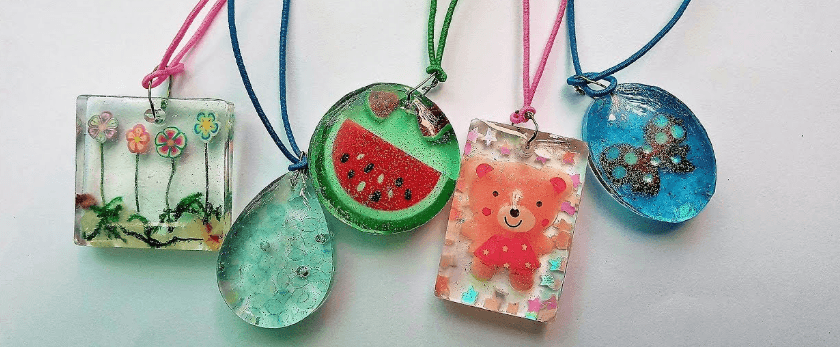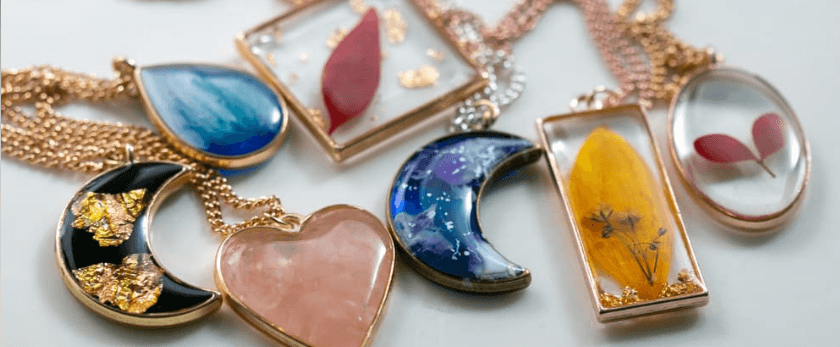Welcome to the world of homemade resin jewelry! Not only is it a fun and creative hobby, but it's also a great way to reduce your environmental impact. In this article, we'll explore why traditional jewelry can be harmful to the environment and how making your own resin jewelry can be a more sustainable option. We'll also provide a step-by-step guide on how to make your own resin jewelry at home. So let's get started!
The Environmental Impact of Traditional Jewelry
Many people don't realize the negative impact that traditional jewelry can have on the environment. Here are some reasons why:
- Mining: The production of traditional jewelry often involves mining for precious metals and gemstones. This can have a devastating impact on the environment, including deforestation, soil erosion, and water pollution.
- Energy consumption: The process of mining, refining, and manufacturing traditional jewelry requires a significant amount of energy, which contributes to greenhouse gas emissions and climate change.
- Chemicals: The chemicals used in the production of traditional jewelry, such as cyanide and mercury, can be harmful to both the environment and the workers involved in the process.
- Waste: Traditional jewelry often comes packaged in plastic or other non-biodegradable materials, which end up in landfills and contribute to pollution.
Why Making Your Own Resin Jewelry is Better for the Environment
Now that we've discussed the negative impact of traditional jewelry, let's explore why making your own resin jewelry is a more eco-friendly option:
- Sustainable materials: Resin is a type of plastic that can be made from natural materials such as tree sap or cornstarch. This means that it can be produced without the need for mining or other harmful practices.
- Less energy consumption: Making resin jewelry at home requires less energy compared to the production of traditional jewelry. This is because you can use natural light to cure the resin instead of using energy-intensive machinery.
- Non-toxic: Unlike the chemicals used in traditional jewelry production, resin is non-toxic and safe for both the environment and the person making the jewelry.
- Minimal waste: When making your own resin jewelry, you have control over the materials and packaging used. This means you can opt for more sustainable options, such as using recycled materials or biodegradable packaging.
What You'll Need to Make Resin Jewelry
Before we dive into the step-by-step guide, here are the materials and tools you'll need to make your own resin jewelry:
- Resin: You can purchase resin from craft stores or online. Make sure to choose a non-toxic and eco-friendly option.
- Hardener: Resin requires a hardener to cure properly. Make sure to use the recommended hardener for the type of resin you're using.
- Pigments: If you want to add color to your resin, you can use pigments specifically made for resin.
- Molds: You can use silicone molds or create your own molds using materials such as clay or cardboard.
- Mixing cups and stir sticks: These are essential for mixing the resin and hardener.
- Protective gear: It's important to wear gloves, a mask, and protective eyewear when working with resin.
- Sandpaper: This will be used to smooth out any rough edges on your finished jewelry.
- Optional: Glitter, dried flowers, or other decorative elements to add to your resin jewelry.

Step-by-Step Guide to Making Resin Jewelry
Now that you have all the necessary materials, let's dive into the step-by-step guide on how to make your own resin jewelry:
Step 1: Prepare your workspace
Before you start working with resin, make sure to set up your workspace in a well-ventilated area. Cover your work surface with a plastic sheet or newspaper to protect it from any spills.
Step 2: Mix the resin and hardener
Follow the instructions on your resin and hardener to mix the correct ratio. Make sure to mix thoroughly for at least 2-3 minutes to ensure the resin and hardener are fully combined.
Step 3: Add pigments and other decorative elements
If you want to add color or other decorative elements to your resin, now is the time to do so. Mix in the pigments or add the decorative elements to the mold before pouring in the resin.
Step 4: Pour the resin into the mold
Carefully pour the resin into the mold, making sure to fill it to the top. Use a stir stick to remove any air bubbles that may have formed.
Step 5: Let it cure
Follow the instructions on your resin to determine the curing time. It usually takes 24-48 hours for resin to fully cure, but this may vary depending on the type of resin you're using.
Step 6: Remove the resin from the mold
Once the resin has cured, carefully remove it from the mold. If there are any rough edges, use sandpaper to smooth them out.
Step 7: Create the jewelry piece
You can now turn your resin piece into a jewelry piece by adding a jump ring or drilling a hole to attach a chain or earring hook.
Responsible Disposal of Resin
It's important to dispose of any leftover resin and hardener properly to avoid harming the environment. Here are some tips for responsible disposal:
- Do not pour leftover resin down the drain. Instead, let it cure in a disposable container and dispose of it in the trash.
- Hardener can be disposed of in the trash, but make sure to check the instructions for any specific disposal guidelines.
- If you have a large amount of leftover resin, consider donating it to a local school or community center for art projects.
Conclusion
Making your own resin jewelry is not only a fun and creative hobby, but it's also a more sustainable option compared to traditional jewelry. By using eco-friendly materials and reducing waste, you can help reduce your environmental impact. So why not give it a try and create your own unique and eco-friendly jewelry pieces? Happy crafting!










